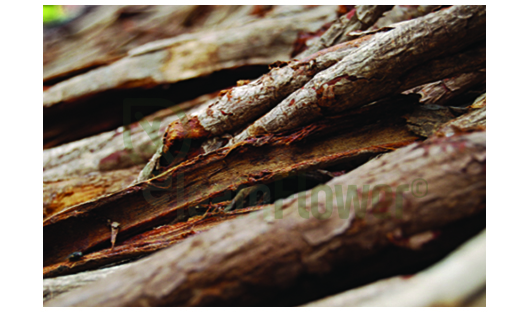Description
Details
Effects on the heart, Good for the Liver, Uterine blood circulation
and purification, Menstruation, Cramps, Warm in the womb.

Slippery elm is a tree that grows in North America. For centuries, Native Americans -- and later European settlers -- used its inner bark as a treatment for many conditions.
Slippery elm has not been well-studied. There's some evidence that it may help with certain cold symptoms. One study found that sucking on slippery elm lozenges may help ease a sore throat.
Slippery elm contains mucilage. This is a sticky substance that can't be digested. Mucilage seems to help improve bowel regularity. A small amount mixed in water to make a slurry is ingested for digestive problems. Slippery elm may help people with constipation due to irritable bowel syndrome (IBS), one small study showed. More research is needed. Some people also use slippery elm powder in water to soothe heartburn and mild stomach discomfort.
A small amount mixed in water to make a slurry is ingested for digestive problems.
Some people use slippery elm ointments to soothe skin ulcers and cold sores. There's not enough research to know if they really help.
Slippery elm is an ingredient in an herbal cancer treatment called Essiac. There's no evidence that it has any benefit, though.
Standard doses of slippery elm have not been set for any condition. Ingredients in supplements may vary widely. This makes it very hard to set a standard dose.
Can you get slippery elm naturally from foods?
Slippery elm bark is edible. Some manufacturers add slippery elm to throat lozenges, baby foods, and nutrition drinks.
What are the risks?
Tell your doctor about any supplements you're taking, even if they're natural. That way, your doctor can check on any potential side effects or interactions with medications.
Side effects. Slippery elm supplements seem to be safe for most adults. It can cause allergic reactions in sensitive people. Slippery elm ointment on the skin can sometimes cause a rash.
Risks. Slippery elm may not be safe for children or for women who are pregnant or breastfeeding.
Pregnant women especially should not use slippery elm. Traditionally, people thought it could cause miscarriages.
Interactions. Slippery elm may slow down how quickly your body absorbs medications, so don’t ingest slippery elm near the time when you take your medicines. If you take any medications regularly, talk to your doctor before you start using slippery elm supplements.
Supplements are not regulated by the FDA.
Additional
Additional
| Health Benefits | Allergies, gastritis, phlegm, rhinitis, sinus |
|---|---|
| Directions | Shake/Blend of the powder with water. You may also use for baking or hot tea. |
| Product Package | Powder, Pouch |
| Good herbal formulation | Jujube, Rhizome of Atractylodes lancea, Longan Fruit |
| Storage Temperature | room temperature |
| Country of origin | Korea |
Reviews
Health
How To
How to eat Healthy Natural Powder :
Pour cold or warm water into a cup or bowl (200-250ml), take appropriate amount of healthy natural powder (2-3spoons) and stir well.
You may add honey, sugar, or salt. You could pour milk or soy mailk.
Notice :
Because of grain characteristics, opened product can be contaminated with foreign substances,
molds and others by air contact and worms can be found so please eat as soon as possible and seal the package tightly in case of refrigerator.
Not recommended for pregnant women.
DISCLAIMER
Some individuals may have adverse reactions to certain plants, herbs, and other natural products.
On any issue where no specific advice is given to consumers please follow this general advice; if you are currently taking the product;
you are advised to discontinue use and consult your pharmacist or herbal medical doctor.
When speaking to your doctor or pharmacist you may find it is helpful to take a copy of this MHRA advice about the product with you.
You should continue to take any medication prescribed by your doctor.
FAQ
Frequently Asked Questions
A: Generally you boil 20g of tea/herb with 2L. of water. The ratio does not matter. However, it is recommended that you control the
saturation of the tea (how strong it is) depending on your personal
preference and body condition.
A: It depends on the tea/herb.
For leaves: boil for 15~20 min.
For hard fruits, roots, and stems: If you soak the tea/herb in water
for 1~2 hours before boiling, you can save time in boiling, and also
get a deeper flavor than without soaking.
A: Currently, what is listed on the site is what we mostly deal with in
retail stores. However, if there is a certain tea/herb that you wish to
get, you can send an email to info@leafnflower.com. or 844-344-0622.
Then, we may offer a price for obtaining the tea/herb, answer questions, and even offer purchase.
A: Yes, you can combine 5~10g of teas/herbs that you already have with Leafnflower.com's teas/herbs.
Although brewing one tea/herb is still good, combining 2~3 teas/herbs helps bring out
the remedial effects of the tea/herbs better than brewing just one tea/herb. However, most tea/herbs contain natural toxins,
and it is recommended that you boil 1~2 pieces of liquorice root along with the tea/herb to remove the toxin.

